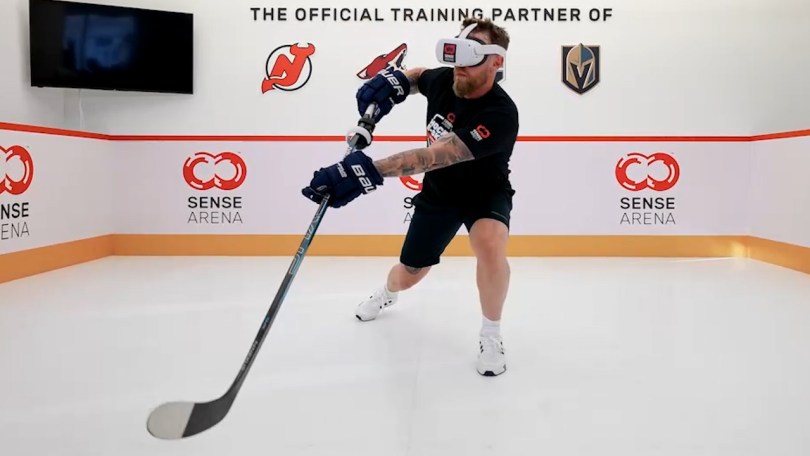Train like a pro while dressed as one.
VR sports training provider, Sense Arena, today announced that it has partnered with the National Hockey League (NHL), to launch NHL Sense Arena, the first-ever interactive NHL VR platform.
First launched back in 2018, the Sense Arena hockey platform immerses you in a variety of virtual challenges and drills designed to test your skills on the ice and help improve your performance. The platform is employed by multiple professional sports organizations like the LA Kings and the New Jersey Devils to train their athletes and can be used virtually anywhere, from the locker room to a hotel room.
NHL Sense Arena is the official successor to the original Sense Arena hockey platform and features the jerseys and logos of all 32 NHL teams, allowing you to train and compete as an NHL player or goalie using your personal hockey stick while supporting your favorite franchise.
“The NHL has some of the most passionate fans in all of sports and we are thrilled to bring them onto the ice to experience what it feels like to train like an NHL player or goalie,” said Sense Arena founder and CEO, Bob Tetiva, in an official release. “This new partnership will allow hockey lovers of all ages to compete against each other in exciting drills while representing their favorite NHL teams.”
NHL Sense Arena is scheduled to launch in Fall 2023 for Meta Quest and Quest Pro headsets. The app pairs with your existing hockey equipment, offering a truly immersive training experience that has a genuine impact on your performance. Current Sense Arena hockey subscribers will receive the NHL platform update 100% free of charge.
For more information on pricing visit www.sensearena.com/store/us.
We had the chance to check out the Sense Arena hockey platform a couple of years ago and were impressed by the generous catalog of virtual drills provided. As I trained, the app kept track of various performance metrics, such as my accuracy and speed.
Since that 2021 demo, Sense Arena has been designated the official Virtual Reality Training Tool of USA Hockey.
Feature Image Credit: Sense Arena

